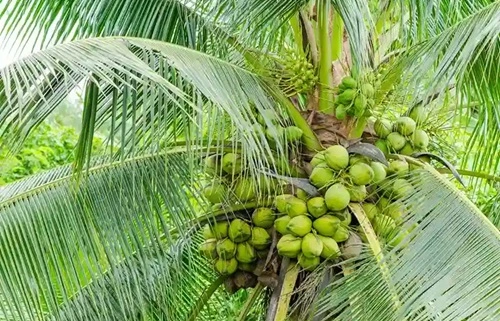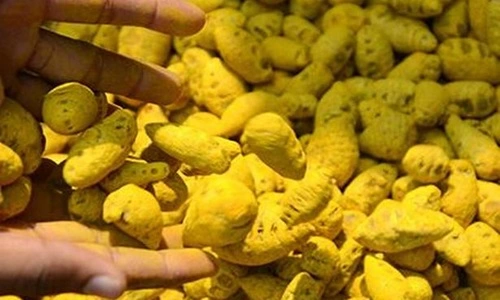India is a major player in the global coconut industry, ranking as one of the top producers in the world. Coconuts are cultivated extensively across various states, contributing significantly to the country’s economy and providing livelihoods for many farmers. Subsisting on a diet, the coconut offers numerous culinary uses as well as industrial purposes. Now, let us review the names of the top five most coconut-yielding states in India this season.

1. Karnataka
Karnataka, however, retains the same level of skill as the country’s highest coconut-producing states. Besides the favorable climatic conditions and wide cultivation emerging practices, the low production cost of a country is high. The districts of Dakshina Kannada, Udupi and Uttara Kannada play an important role as the coconut cluster of Karnataka. Apart from getting highly innovative and modern techniques of farming, the state also adopts the state commitment to agricultural innovation to maximize their coconut yield.
2. Tamil Nadu
Long-time people of Tamil Nadu are highly admired for palm cultivation. Cozhna trees bloom in the coastal zones of Tamil Nadu, and districts like Thanjavur, Tiruchirappalli, and Kanyakumari offer excellent climatic conditions for their growth. The agricultural policies of Tamil Nadu along with the supporting systems of the state have been a good foundation for the coconut industry, which makes consistency in production a common thing. Moreover, sustainable agricultural practice efforts can contribute to the state’s agricultural stability
3. Kerala
Coconut and its association with Kerala reflect in cultural and economic aspects of its life immensely. The state is graced with very many lovely landscapes which have coconut trees growing everywhere. It, thus, becomes obvious that it is a coconut hub. Both the coconut productive zones in Kerala characterized by rich soil and usually fall into heavy rains are enviable eco-zones that are very favorable for planting coconut. Thrissur, Malappuram, and Kozhikode are the other main contributors to coconut production in the state of Kerala. The organic farming and age-long cultivation techniques that is advocated by the state have contributed to this area earning a good standing as the number one coconut-producing place.
4. Andhra Pradesh
Andhra Pradesh looks like the leading player in the Indian coconut cluster whilst it becomes not just a production center but also the main distribution point for the whole country. Coconut farming is most favorable along the coastal side that covers the districts of East Godavari, West Godavari, and Krishna belong to. Moreover, the agricultural policies that are forward-looking in Andhra Pradesh and investments in infrastructure are responsible for the prosperity of this area. Further, the irrigation schemes as well as the research done on growing the yields of plantations in the state are strategies that can make coconut farming more productive for the country.
5. West Bengal
The state of West Bengal has a huge prospect in coconut plantations in the coastal and plain land. We can see the cultivation activities in areas like South 24 Parganas, North 24 Parganas, and East Medinipur covering large acres of land. Although West Bengal coconut farmers are encountering obstacles such as soil salinity as well as powerful cyclone weather, they are demonstrating their strength and willingness to adapt in the process of maintaining a high level of coconut yields. The state government’s contribution to the sector through the subsidy and technical assistance programs also feeds into the relatively good development of coconut farming in West Bengal state.
Conclusion:
India’s coconut industry mainly relies on complex linkages which include united and skillful farmers and also helps in growing the sector by providing favorable agro-climatic conditions and supportive government policies. The ranking of top 5 coconut-producing states of Karnataka, Tamil Nadu, Kerala, Andhra Pradesh, and West Bengal harmoniously portrays the nation’s agro-economic genius and clever harnessing of natural resources. Innovation and sustainability, which are traits exhibited by the nascent states, offer great growth potential as long as economies and livelihoods centered on coconut can sustain their pace.
FAQs:
Q1. What variables are responsible for this unique characteristic of the coconut plantation in the above-mentioned states?
Ans: In these States, the dominant climate, nutrient-rich soil, coastal regions, and favorable agricultural policies are some vital factors that give palm oil production a boost.
Q2. How do these regions ensure that the number of mature coconut trees per acre of land is high enough to produce a good output?
Ans: Implementation of sophisticated farming methods, farming in organic ways, and fulfilling quality standards are critical aspects to the keeping of the quality of the coconut produce.
Q3. Apart from challenges, what are the obstacles states there meet in coconut production?
Ans: Grapes with obstacles like reverse climate, land salinity, insect infestation, and market fluctuation every now and then, will be overcome by farmers through resilience and ingenuity.
Related Topics:
- Top 5 Most Mango Producing States In India
- Top 5 Most Sugarcane Producing States In India
- Top 5 Most Orange Producing States In India
- Top 5 Most Banana Producing States in India
- Top 5 Most Apple Producing States in India

